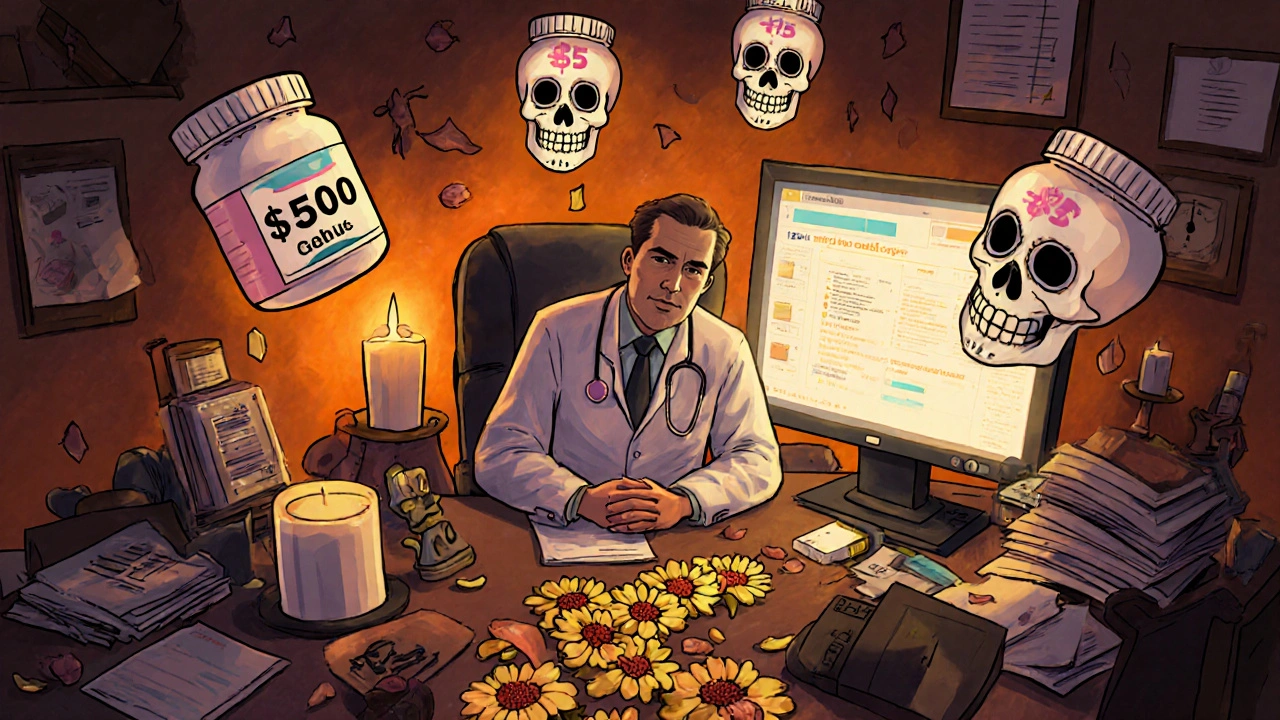
Doctors prescribe medications every day. But how often do they know what those drugs actually cost?
It’s not a trick question. It’s a systemic problem. A 2016 study of 254 medical students and practicing doctors found that only 5.4% of generic drug prices and 13.7% of brand-name drug prices were estimated within 25% of the actual cost. That means nearly 9 out of 10 times, clinicians guessed wrong - sometimes wildly so. They thought cheap pills were expensive. They thought expensive pills were cheap. And in a healthcare system where patients skip doses because they can’t afford their meds, that disconnect isn’t just inconvenient - it’s dangerous.
Why Does This Gap Even Exist?
Doctors aren’t lazy. They’re overwhelmed. A 2007 review of 29 studies showed that 92% of physicians wanted cost information at the point of care - but couldn’t find it. Back then, checking a drug’s price meant logging into a separate portal, calling the pharmacy, or asking a pharmacist during a rushed visit. That’s 3 to 5 minutes per prescription. Multiply that by 20 prescriptions in a morning clinic, and you’re adding half an hour to an already packed day.
And it’s not just time. The pricing system itself is a maze. The same drug can cost $15 at one pharmacy and $320 at another, depending on the patient’s insurance, deductible, and whether the pharmacy is in-network. Even the same patient might pay different amounts on different days. No wonder clinicians give up and prescribe based on habit, familiarity, or what’s listed first in the electronic health record (EHR).
What Do Studies Actually Show?
The data is consistent across decades. In a landmark 2007 study, physicians overestimated the cost of inexpensive drugs by 31% and underestimated expensive ones by 74%. Why? Because most doctors learn about drugs through medical school textbooks, pharmaceutical reps, and journals - none of which list prices. They’re taught about efficacy, side effects, and mechanisms. Cost? That’s left to the pharmacist, the insurer, or the patient.
Medical students fare even worse. A 2021 study showed that only 44% of students understood that drug prices have almost nothing to do with research and development costs. Most still believe the myth that a $500 pill means $500 went into discovering it. In reality, the average cost to develop a new drug is around $2.6 billion - but that’s spread over decades and thousands of failed candidates. Meanwhile, existing drugs like Humira saw price hikes of 4.7% in 2023 with no new clinical benefits. The price isn’t tied to science. It’s tied to market power.
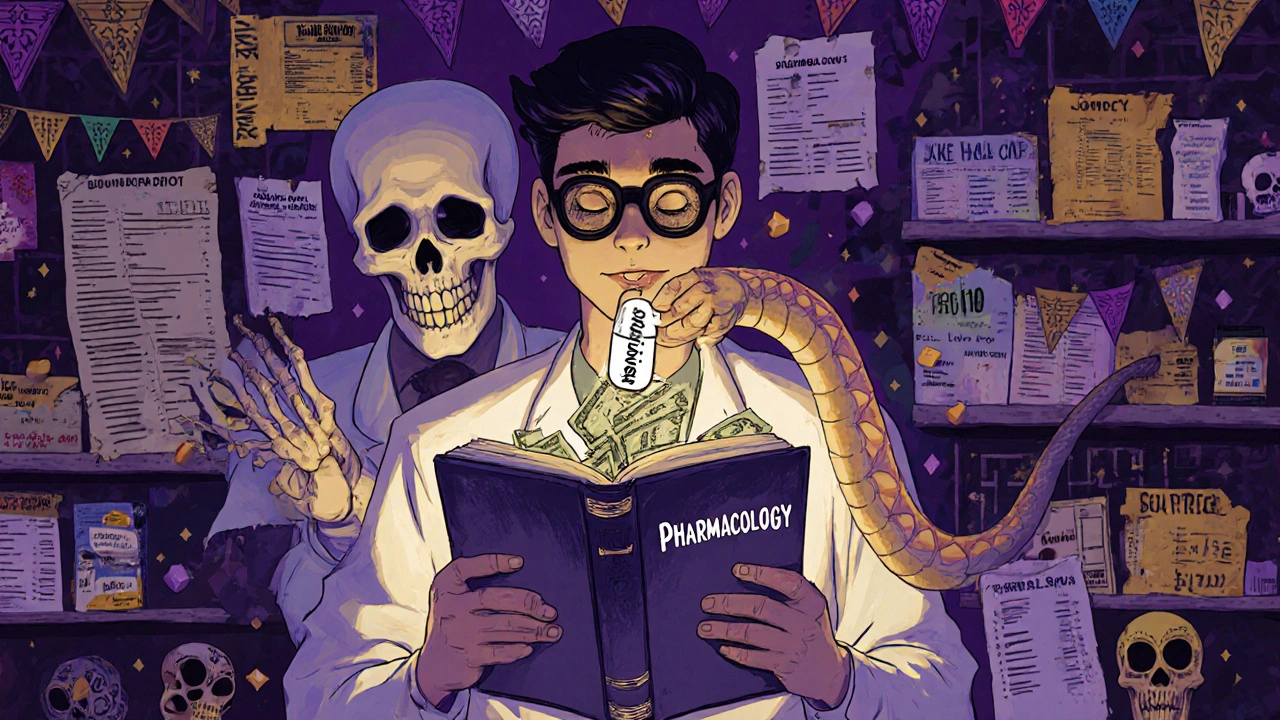
When EHRs Start Showing Prices - Things Change
The biggest breakthrough in closing this gap came not from education, but from technology. When real-time cost data was integrated into EHRs, things started shifting.
A 2021 JAMA Network Open study found that doctors with access to out-of-pocket cost estimates in their EHRs performed significantly better on cost estimation tasks. Even more telling: one in eight primary care physicians changed a prescription after seeing a cost alert. That number jumped to one in six when the potential savings were over $20.
At UCHealth, a system-wide rollout of cost alerts led to a 12.5% reduction in high-cost prescriptions. That’s not just money saved - it’s patients who actually fill their prescriptions. One resident in r/Residency summed it up: “I prescribed a $400 monthly inhaler. The alert said there was a $15 generic alternative with the same effectiveness. I changed it. The patient cried when she found out she wouldn’t have to choose between her meds and her rent.”
But it’s not perfect. Many systems still show insurer-specific prices, not patient-specific copays. A patient with a high deductible might pay $200 out-of-pocket, but the alert says “$50.” That’s misleading. And some EHRs only show list prices - the inflated “sticker price” that insurers negotiate down, not what the patient actually pays. Clinicians need accurate, personalized data - not generic estimates.
Who’s Getting It Right?
Not every hospital has figured this out. As of Q3 2024, only 37% of U.S. health systems use real-time benefit tools (RTBTs). But the leaders are making a difference.
Mayo Clinic’s Drug Cost Resource Guide, updated quarterly since 2019, has a 4.7/5 rating from over 1,200 physicians. It’s not flashy. It’s simple: a searchable database with actual cash prices, insurance tiers, and generic alternatives. Compare that to the generic Medicare Part D formulary, which scores just 2.8/5 - because it’s outdated, hard to navigate, and doesn’t reflect real-world costs.
And it’s not just about tools. Some institutions are teaching it. A 2021 study found medical students’ drug pricing knowledge improved with each year of training - but only slightly. Only 1 in 5 U.S. medical schools has a formal curriculum on drug pricing. That’s unacceptable. You wouldn’t let a surgeon operate without knowing how to use the scalpel. Why let a doctor prescribe without knowing the price tag?

The Bigger Picture: Why This Matters Beyond the Clinic
Prescription drug spending hit $621 billion in 2022 - nearly 10% of all U.S. healthcare costs. And 28% of adults say they’ve skipped or cut pills because of cost. That’s 1 in 4 people. When doctors don’t know prices, they don’t see the consequences. A patient with diabetes who can’t afford insulin. A senior choosing between heart medication and groceries. A parent who skips their child’s asthma inhaler because the copay is $120.
Cost awareness isn’t about cutting corners. It’s about choosing wisely. The American College of Physicians and the American Medical Association have both declared cost-conscious prescribing a professional responsibility since 2015. And now, federal policy is catching up. The 2022 Inflation Reduction Act lets Medicare negotiate prices for 10 high-cost drugs - a move supported by 80% of Americans, regardless of political affiliation.
What’s more, early data shows that when cost alerts are used effectively, patients save an average of $187 per year on prescriptions. That’s not a drop in the bucket. That’s rent. That’s groceries. That’s a bus pass to get to work.
The Road Ahead: What Needs to Happen
Fixing this isn’t about blaming doctors. It’s about fixing the system.
- Make cost data mandatory in EHRs. It shouldn’t be an optional add-on. It should be as standard as drug interactions and allergies.
- Improve accuracy. Alerts must reflect the patient’s actual out-of-pocket cost - not the list price or insurer’s negotiated rate.
- Teach it in medical school. Pharmacotherapy courses need a module on pricing, value, and affordability - not just mechanisms and side effects.
- Expand RTBTs to safety-net clinics. Preliminary data shows cost alerts reduce disparities: safety-net clinics saw 22% higher prescription modification rates than private practices. That’s equity in action.
- Hold manufacturers accountable. The December 2024 AHA report found five major drugs got price hikes with no clinical justification. Transparency isn’t just for clinicians - it’s for the public.
Some economists argue that doctors should focus only on medical value, not cost. But value isn’t just clinical benefit. It’s benefit relative to cost. A $10,000 drug that extends life by two weeks isn’t value if a $50 drug does the same thing. That’s not just economics - it’s ethics.
Doctors want to help. Patients want to get better. The system just needs to give them the right tools - and the right information.
Do most doctors know how much medications cost?
No. Studies show most clinicians significantly misestimate drug prices - overestimating cheap drugs and underestimating expensive ones. Only about 5-14% of cost estimates fall within 25% of the actual price, depending on whether the drug is generic or brand-name.
Why don’t doctors know drug prices?
Medical training rarely covers pricing. Textbooks, pharmaceutical reps, and journals focus on efficacy and safety - not cost. Plus, pricing is fragmented across insurers, pharmacies, and patient plans, making real-time access difficult without integrated tools.
Can EHR cost alerts help doctors prescribe more affordably?
Yes. Studies show that when EHRs display real-time out-of-pocket costs, 1 in 8 to 1 in 6 physicians change prescriptions - especially when savings exceed $20. These changes lead to higher medication adherence and lower patient costs.
Is there a difference between generic and brand-name drug price knowledge?
Yes. Doctors are far worse at estimating generic drug prices - overestimating them 77.5% of the time - because they assume generics are expensive. Meanwhile, they underestimate brand-name drug prices by over half, often thinking they’re cheaper than they are.
Are medical schools teaching drug pricing?
Only 1 in 5 U.S. medical schools has a formal curriculum on drug pricing. Most students graduate without understanding how prices are set, why generics cost less, or how insurance affects out-of-pocket costs.
What’s being done to fix this problem?
Leading health systems like Mayo Clinic and UCHealth have integrated real-time cost tools into their EHRs. The Inflation Reduction Act now allows Medicare to negotiate drug prices. Professional groups like the AMA and ACP have made cost-conscious prescribing a standard. But widespread adoption is still slow - only 37% of U.S. hospitals use these tools as of 2024.

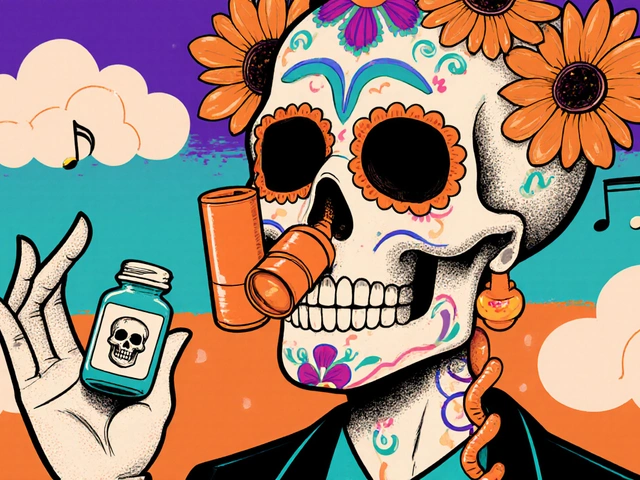

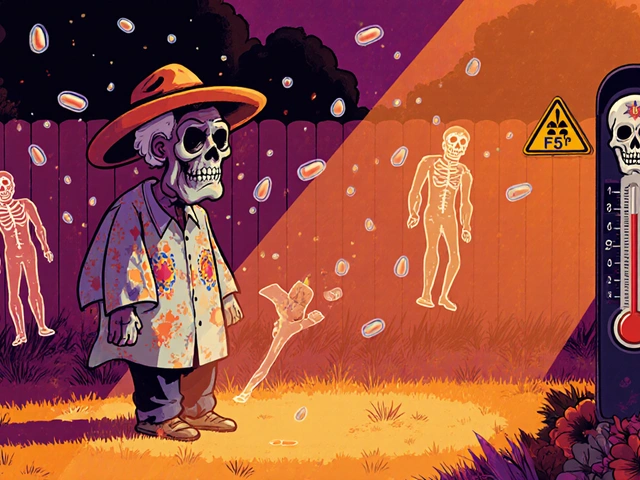
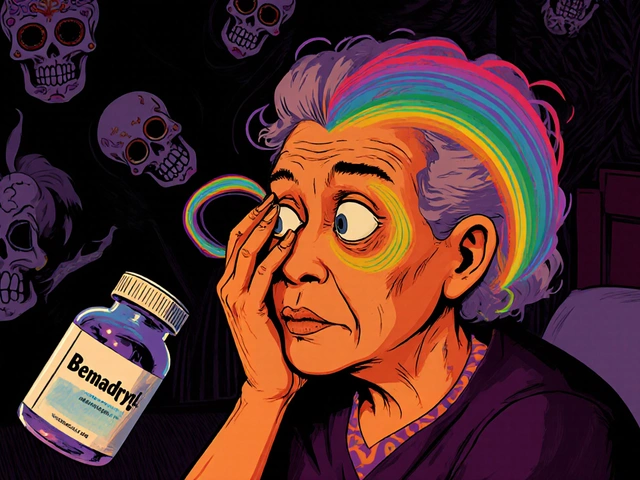
There are 11 Comments
Amanda Wong
The fact that doctors can't estimate drug prices isn't a failure of education-it's a failure of systemic design. They're not trained to care because the system doesn't reward them for caring. The real question is why we let the pharmaceutical industry dictate value without accountability.
Stephen Adeyanju
james thomas
Let’s be real-this isn’t about doctors being clueless. It’s about the entire medical-industrial complex being built on obfuscation. Pharma spends billions on marketing, not research. Doctors get free lunches and branded pens. Of course they think a $500 pill is ‘just expensive’-they’re being paid to not ask questions. The system is rigged to keep you blind, broke, and compliant.
And don’t get me started on ‘generic alternatives.’ Half the time those are just rebranded versions of the same crap with a different label. The FDA approves them because they’re chemically similar, not because they’re clinically equivalent. But hey, if it saves $20, who cares right? Except the patient who gets a rash, a seizure, or a heart attack because the ‘equivalent’ drug has a different excipient.
And now they want to make cost alerts mandatory? Great. Now we’ll have a thousand pop-ups every time you type ‘metformin.’ And the worst part? They’ll still show list prices, not actual out-of-pocket costs. That’s like giving a blind person a flashlight that only works in the dark.
Meanwhile, the same people who run the EHRs are also on the boards of the insurance companies that profit from these price gaps. Conflict of interest? Nah. Just ‘business.’
Medical schools won’t teach pricing because they’re funded by pharma grants. The AMA won’t push hard because their donors own the patents. The Inflation Reduction Act? A PR stunt. Ten drugs? Out of 10,000? That’s like trying to put out a forest fire with a squirt gun and calling it ‘climate action.’
We’re not fixing a knowledge gap. We’re fighting a war against profit-driven decay. And the doctors? They’re just the messengers holding the wrong map.
Deborah Williams
It’s almost poetic, isn’t it? We train physicians to heal, yet we withhold the most basic tool for healing: the knowledge of cost. We ask them to be healers, but we refuse to let them see the price tag on the cure. It’s like asking a chef to feed a family without telling them how much the ingredients cost-then blaming them when the child goes hungry.
And yet, we marvel when patients skip doses. We act shocked when someone chooses between insulin and rent. We call it ‘noncompliance’-as if the patient is the problem, not the system that made the choice inevitable.
Perhaps the real failure isn’t that doctors don’t know prices. It’s that we’ve normalized a world where knowing the price of a pill should even be a burden.
Kaushik Das
Man, this hits different coming from India where we see generics like metformin for $0.10 a pill and insulin for $3 a vial. Here in the US, it’s insane how people treat medicine like luxury goods. I remember my cousin in Delhi paying $2 for a month’s supply of a drug that costs $400 here. The same molecule. Same factory, sometimes. The only difference? The country you live in and who owns the patent.
Doctors here aren’t dumb-they’re just drowning in a system that doesn’t give them the tools. In India, we don’t have fancy EHRs, but we do have community pharmacists who know prices better than most doctors. Maybe we need to flip the model-put the pharmacist in the room, not just the algorithm.
And honestly, if a drug costs more than a month’s rent, it’s not a medical issue-it’s a political one. And we keep pretending it’s just a ‘pricing gap.’
Asia Roveda
So now we’re blaming doctors because the government and Big Pharma conspired to make drug pricing a labyrinth? How about we start by holding the CEOs who hike Humira’s price 5% every year with ZERO clinical improvement accountable? Not the guy scribbling on a clipboard while his third patient of the day waits 45 minutes.
This isn’t about education. It’s about corporate theft dressed up as healthcare. And the media keeps letting them get away with it by framing it as a ‘clinician knowledge gap.’ Newsflash: doctors didn’t invent the pricing model. They didn’t write the contracts. They didn’t lobby Congress to block Medicare negotiation for 20 years.
Stop scapegoating the people trying to fix the mess you created.
Micaela Yarman
It is a profound ethical failing when the administration of therapeutic intervention is decoupled from the economic reality of its accessibility. The physician’s Hippocratic Oath, while not explicitly codifying cost awareness, implicitly obligates the practitioner to consider the totality of patient well-being-including socioeconomic determinants of health. The failure to integrate cost transparency into clinical decision-making constitutes a de facto breach of fiduciary duty, not due to negligence, but due to institutionalized structural omission.
The EHR, as the primary interface of care delivery, must be reimagined not as a repository of clinical data alone, but as a conduit for justice-informed prescribing. The absence of patient-specific out-of-pocket cost data is not merely an operational oversight-it is a moral lacuna.
mohit passi
Doctors aren't the problem. The system is. 🌍
Imagine if your car mechanic didn't know how much a tire costs. You'd think they're clueless. But what if the tire company changed prices daily, hid the real cost from everyone, and paid the mechanic to recommend the most expensive one? Now who's at fault?
Pharma sets the price. Insurance twists it. Pharmacies confuse it. EHRs lie about it. And the doctor? They just pick the one that pops up first.
Fix the system. Not the doctor. 😊
Aaron Whong
The epistemic asymmetry between clinical efficacy and economic valuation represents a critical ontological disjunction in contemporary medical praxis. The biomedical paradigm, entrenched in evidence-based protocols and pharmacodynamic modeling, has systematically expropriated cost as a non-therapeutic variable-thereby rendering it epistemologically inert within the clinical gaze.
What we are witnessing is not ignorance, but epistemic exclusion: the deliberate marginalization of cost as a legitimate dimension of therapeutic deliberation. The EHR, as a technocratic apparatus, has the potential to re-embed economic rationality into the clinical decision matrix-but only if we reconceptualize value not as a metric, but as a hermeneutic framework.
Until cost is ontologized within medical epistemology, all interventions-whether alerts, formularies, or mandates-are merely palliative technofixes.
Sanjay Menon
Oh, so now we’re going to make doctors into price-checking clerks? How quaint. Next, we’ll ask them to calculate the ROI of each prescription and file it with the IRS. The notion that clinicians should be burdened with insurance arithmetic is not just absurd-it’s a grotesque inversion of professional expertise.
Let the actuaries handle pricing. Let the pharmacists manage formularies. Let the administrators deal with contracts. The doctor’s job is to diagnose and treat-not to become a human price comparison engine.
And for the love of Hippocrates, don’t confuse cost with value. A $5 drug that fails is worse than a $500 drug that saves a life. You can’t quantify human dignity in dollars per pill.
Brittany Medley
Thank you for writing this. I’ve seen patients cry because they couldn’t afford their insulin, and I’ve watched doctors look away because they didn’t know what else to say. This isn’t about blame-it’s about change. I work in a safety-net clinic, and when we finally got real-time cost alerts, our prescription abandonment rate dropped by 31%. Not because doctors became better at math. But because we finally had a tool that let us see our patients’ reality.
It’s not perfect. The alerts sometimes show the wrong price. Sometimes they don’t load. But they’re better than nothing. And they’re a start.
Let’s not wait for the perfect system. Let’s fix what we can, today.
Write a comment
Your email address will not be published. Required fields are marked *